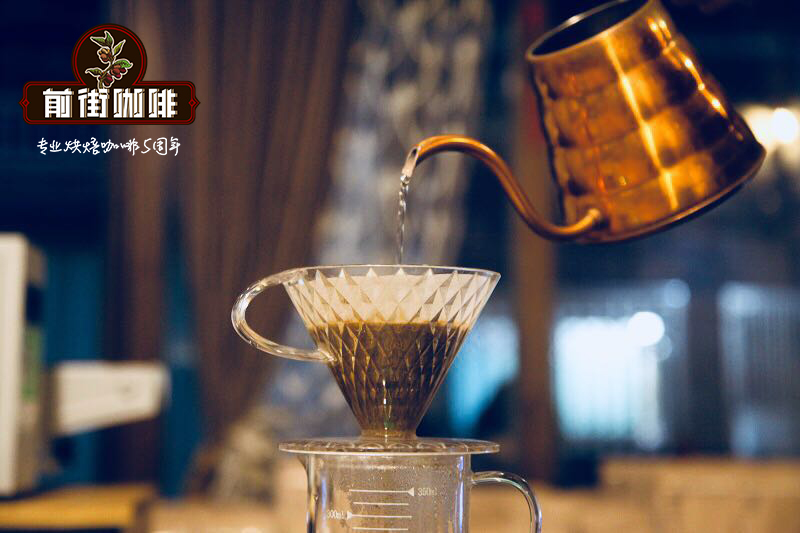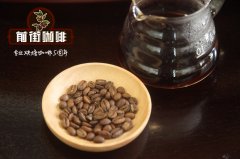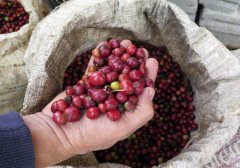Hand-brewed coffee filter cup recommended what is the choice of hand-made coffee filter cup?
Professional coffee knowledge exchange more coffee bean information please follow the coffee workshop (Wechat official account cafe_style)

In the Japanese magazine 'coffee cup', it is mentioned about the flow rate of several commonly seen hand-brewed coffee filter cups, which is a very interesting result, which usually does not seem to be discussed when making coffee by hand. Let's take a look at the picture above, from left to right, cooking time from fast to slow, in order:
HARIO V60 → KONO → doughnut filter cup → KALITA → MELITA
The speed of the extraction time mentioned in the magazine is just a comparison, and there is no exact data, which makes my heart itch, so I have to use a very stupid method to measure several coffee filter cups I have on hand. Although not very rigorous, but more or less reference value, hoping to throw a brick to attract jade, together to explore the secret of hand-brewed coffee.
First, use the amount of water from 400CC and pour it directly into a filter cup without filter paper to see how long it takes to finish. This method is a little stupid for tapered filter cups, so only a few ladder filter cups are made.
[filter-free group flow rate test second / 400CC]
KALITA 101ceramic filter cup for 12 seconds
SANYO Sanyo ceramic filter cup for 18 seconds
BONMAC single hole ceramic filter cup for 28 seconds
KALITA 102ceramic filter cup for 28 seconds
KALITA 185 ceramic filter cup 34 seconds
Stainless steel filter cup for Tosa and paper for 46 seconds
KINTO metal mesh filter cup for 57 seconds
Next, put in the fan-shaped filter paper, also pour in the amount of water from 400CC, and test the time of flow without coffee powder.
[filter paper group flow rate test second / 400CC]
Name time
SANYO Sanyo ceramic filter cup for 45 seconds
SANYO Sanyo ceramic filter cup new version 35 seconds
BONMAC single hole ceramic filter cup for 50 seconds
KALITA 101ceramic filter cup 1 minute 52 seconds
KALITA Bozo saw the burned ceramic filter cup for 35 seconds
KALITA 102ceramic filter cup for 52 seconds
KALITA 155stainless steel filter cup 1 minute 05 seconds
KALITA 185 ceramic filter cup not tested
Stainless steel filter cup for Toussa and paper has not been tested.
KINTO metal mesh filter cup not tested
Hario V60 glass filter cup conical for 25 seconds
Hario V60 ceramic filter cup conical 46 seconds
New version of Hario V60 ceramic filter cup for 30 seconds
UN CAFE ceramic filter cup conical for 60 seconds
Melita siphon filter cup 3 minutes 40 seconds
After the experimental results, when there was no filter paper, the KALITA 101ceramic filter cup with the fastest flow rate became the slowest. What is the reason for this? The original problem lies in the fit between the filter paper and the coffee filter cup. when we use the fan-shaped filter paper, we have to fold the side in half, so the thickness of the paper at the bottom will be doubled, and this part will fit at the bottom of the inside of the filter cup. If you happen to have a KALITA 101filter cup on hand, you will find that most of its three outlet holes are covered by filter paper.
Then why don't BONMAC and SANYO ceramic filter cups have this situation? Because it has a rib-like groove next to the outlet, it will create a gap between the filter paper and the bottom of the filter cup, so the flow speed will not be affected. Friends who do not have these two filter cups can refer to Hongze Coffee's previously published article: 'Taguchi Guard. The unrevealed secret of making coffee at the Baja Cafe.'
So after knowing the difference between these filter cups, you have to adjust the coffee grinding thickness or the amount of powder used when using KALITA 101and 102ceramic filter cups. It is recommended that the slowest filter cup should use less powder to extract less coffee liquid, and vice versa.
In addition, although the tapered filter cup is not in this test, we can imagine that the reason that affects its flow rate is definitely related to the degree of fit between the filter paper and the filter cup, so all brands work on the inner guide groove.
Important Notice :
前街咖啡 FrontStreet Coffee has moved to new addredd:
FrontStreet Coffee Address: 315,Donghua East Road,GuangZhou
Tel:020 38364473
- Prev

What are the characteristics of microbatches? What are its characteristics?
For more information on coffee beans, please follow the Coffee Workshop (official Wechat account cafe_style). This coffee comes from a specific section of an estate, sometimes from a small farm, or from a small plot of land shared by many producers. Coffee is harvested and processed in small batches because of the increase in labor costs.
- Next

There's caffeine in the coffee? What's the use of caffeine?
Professional coffee knowledge exchange more coffee bean information Please pay attention to the coffee workshop (Wechat official account cafe_style) people are always biased against caffeine, but in fact, moderate consumption of caffeine will bring many benefits to the human body. Caffeine is naturally found in our daily diet, such as tea, coffee and chocolate, which is a natural stimulant.
Related
- Why can American refills for free? The difference between Americano and American drip pot coffee
- Being chased out of the rain in front of Starbucks?! Store: Sheltering from rain under umbrellas poses a safety hazard
- The white moonlight has changed?! Lucky launches "Big Winter Pear American"
- Hand-brewed coffee three-stage method, high-sweet and universal brewing method to share! What does the high sweet water level of hand-brewed coffee mean?
- What is the difference between raw, refined and full espresso coffee? How to extract espresso and taste good?
- A complete list of coffee bean names and their meanings! What is Yejia Shefi coffee? Where is Mantelin coffee?
- What grade does Arida Manor Kaduai coffee beans belong to? What treatment is Arida ASD slow anaerobic sun exposure?
- The milk tea cup becomes smaller?! Overlord Tea Girl launches a new "Return to Yunnan" series
- Accused of selling counterfeit and high-priced coffee beans! Well-known boutique coffee brand "Oukelao" bowed and apologized!
- How to make espresso dumplings? Can I eat coffee and glutinous rice balls together?

